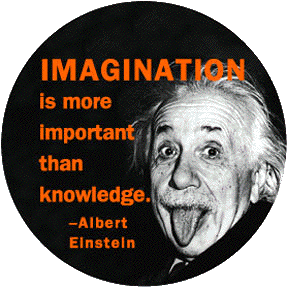ARTIFACT: IMAGINATIVE EDUCATION RESEARCH GROUP DOCUMENT
We were fortunate to attend several workshops throughout the Bachelor of Education program at the University of British Columbia. It is natural that different workshops pique the interests of certain teacher candidates – in my case, I was fascinated by the presentation we saw on the Imaginative Education Research Group (IERG). (Please click here to see an IERG document about imaginative education.) Using socio-cultural theories that state the social nature of education in children (predominantly Vygotsky), the research group has developed “a way of teaching and learning that is based on engaging learners’ imaginations…the imaginative educator seeks to value and build upon the way the child understands her or his experiences, rather than always focusing on the ‘adult’ way of understanding as the measure of learning. To do this, educators themselves must be imaginative and sensitive to dimensions of learning that they may have never thought of as relevant to education.”* This method of teaching spoke to me in a way that I had not yet experienced through traditional teaching methods. Especially having had a strong background in arts education, where the use of one’s imagination is often the crux of the lesson, I was thrilled to find the further research that had been done by IERG.
I was able to relate a lot of what I’d learned about IERG to the career-long learning journey I had already begun prior to entering the B.Ed. program. Having just completed my M.A. in Drama Education when I switched paths (from pursuing a Ph.D.) to pursue a B.Ed, as an arts educator, I expected I would use imagination in my classroom on a daily basis. Though I was never discouraged from using the drama techniques I’d created or stumbled upon over the years, I was, honestly, concerned that my techniques would be “too far-fetched” or “too imaginative.” The daunting idea of not using what I felt comfortable doing in the Math, Science, or Health classroom was a fear of mine. Essentially, I was concerned that my passion for the arts, and imaginative education, would not be applicable in other classes and though I was interested in learning new methods, it was sad to think that I would have to give up what I’d both worked so hard to develop, but also what I felt was a very natural part of my teaching style.
When I discovered IERG, it did not so much as open a door for me (as it did for other students in my cohort), but rather it gave me permission to do what I loved doing in any classroom. In learning more about imaginative education techniques, I’ve been challenged to find ways to use the arts in my classroom as the catalyst for imaginative ways of thinking. I feel like my pursuit of arts education has been justified in the educational system as a valid and effective way to teach rather than just an after-school activity.
What does this mean for my future educational journey? I plan to continue to learn about imaginative education and to incorporate it into my teaching techniques. I also plan to revisit several of the arts educational theorists who have served me in the past (Paulo Freire, Augusto Boal, Cecily O’Neill, Dorothy Heathcote, to name a few), but through a new lens. How can I use what I gathered from these arts educators in other areas of the curriculum? Are there other arts educators who have seamlessly crossed over into the other curricula areas? I can only begin to imagine all of the learning I have yet to do to incorporate my love of the arts into with my love of teaching. I look forward to engaging in the process.
*”The Imaginative Education Research Group.” (n.d.) Retrieved on July 12, 2009 from http://ierg.net/about/whatis.html#intro.
